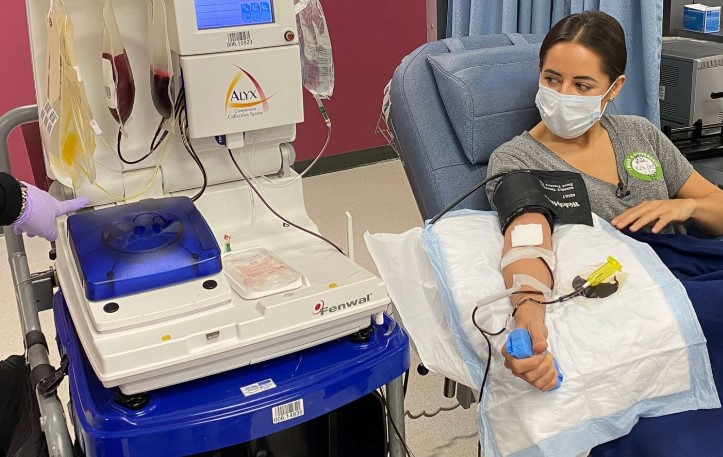FAQs About Plasma Donation

Plasma donation is quite common these days. People donate plasma to save lives and allow recipients to live healthily. That’s because plasma is used to make various treatments used to treat a wide range of illnesses. Other than saving lives, you’ll also be compensated for donating plasma.
Donating plasma is not like donating blood, so it’s quite complicated. Thankfully, we are here for you. This article discusses the most frequently asked questions regarding plasma donation. Let’s delve into them.
1. What is plasma?
All of the body’s cells receive water and nutrients through plasma, which is the blood’s transparent, yellowish fluid element. Approximately 90% is salt water, with 10% being protein and electrolytes. Numerous specific proteins (antibodies) found in plasma help fight infections and can be used to create life-saving pharmaceuticals.
2. Why should you donate plasma?
Your plasma is needed, so you should donate if you can. High-quality products are crucial for hospitals and doctors, but the antibodies needed to create them are frequently in short supply. One of the most fulfilling benefits of donating plasma is knowing that your efforts have helped others live healthier lives.
Additionally, these donation centers pay donors for their plasma donations because the time you spend giving plasma is valuable.
3. How will my plasma be used?
The plasma collected is used to make a wide variety of life-saving products that could benefit thousands of people daily. Immune globulins made from your plasma may be used to treat or prevent illnesses like chickenpox, hepatitis B, and hemolytic sickness of the newborn. Every donation can be used to create various items to treat burns, bleeding disorders, and other diseases. Additionally, reagents for diagnostic test kits used to screen for and identify diseases can be manufactured from plasma.
4. How do I qualify to donate plasma?
You must be at least 18 years old, weigh the minimum weight required, and be in generally good health to participate in most plasma programs. You will have a physical examination and your medical history evaluated during your first consultation. These procedures ensure the safety of both the donor and the recipients of the plasma-based products. Your health will be examined at each visit.
5. Is donating plasma safe?
Yes. Every day, thousands of people donate plasma painlessly and safely. Plasma donation is carried out under tight safety regulations for each donor’s comfort and well-being in a highly controlled, sterile environment by trained medical team members. They work with sterile, one-time-use supplies that are thrown away right away.
6. What should I expect when donating plasma?
Plasmapheresis, an automated process, is used to make donations. The procedure of extracting whole blood and separating the cellular components from the plasma is known as plasmapheresis. The plasma is kept for use in creating medical products, while the red, white, and platelets are returned to the donor.
You’ll lie down during the donation, much like when giving blood. Your blood will be drawn into sterile equipment after a needle is inserted into a vein in your arm. Once it has been used, the equipment is discarded. The red, white, and platelet-containing blood cells are separated from the plasma in this sterile apparatus. The same needle is inserted into your arm to return these blood cells and platelets to you. Sterile saline will be administered to you via the needle after the donation to assist in replenishing the plasma that was taken from your blood. You won’t feel weak or exhausted after donating since the red blood cells are returned to you, and most of the plasma is replaced with saline.
7. How often can I donate plasma?
Healthy people can donate up to twice in seven days, with at least one day in between, because the body quickly replaces the plasma lost during the donation process.
8. What can I eat before donating plasma?
A balanced, healthy diet and drinking lots of water are usually wise decisions, but they are especially crucial in the days before plasma donation. A good night’s sleep is essential the night before your donation. On the day before and the day of the donation, consume 6 to 8 cups of water, and before the donation, eat a protein- and iron-rich meal.
Beans, legumes, beef, poultry, shrimp, cheese, eggs, milk, yogurt (particularly Greek yogurt), seeds, and nuts are high-protein foods that you should eat before donating plasma. All foods high in iron include broccoli, beef, beans, breakfast cereals with added iron, chicken, ham, dark leafy greens, raisins, and watermelon.
On donation day, avoid fatty foods like French fries and other fried foods, pizza, and desserts. Also, don’t drink alcohol the night before. They may impact your blood tests, and you may be unable to donate.
9. What are the potential side effects of plasma donation?
Although most side effects from plasma donation are minor, if it’s your first time, you should get a ride home just in case. The most frequent side effects include bruising and nerve sensitivity, generally at the injection site. It might have a small swelling, which you can treat with ice. At the injection site, nerve irritation causes severe pain that can shoot down the arm and into the hand. Inform the technician if this occurs, and they will immediately remove the needle. The stabbing pain should go away, though some minor discomfort can linger for a day or two.
However, more serious dangers may be associated with plasma donation, such as a drop in blood pressure that can cause dizziness or fainting. Some people go through this due to a phobia of needles or getting their blood drawn. The additional adverse effects also include paleness and sweating, weakness, abrupt warmth, and nausea or vomiting. There may also be vertigo and impaired or tunnel vision.
10. Why do plasma donors get paid?
In centers, plasma donors spend about two hours, often twice a week, to prolong or improve someone’s life. These donors get compensation for their dedication to the program and their time.






